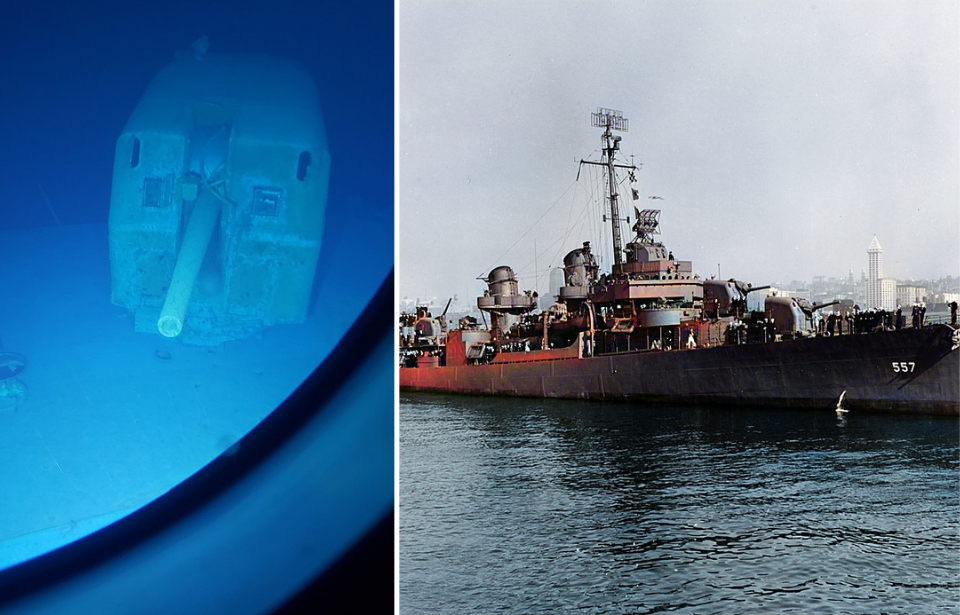The USS Johnston (DD-557) was a destroyer that saw service with the US Navy during World War II. She saw the most activity in the Marshall Islands and the Leyte Gulf, the latter of which would be the vessel’s final resting place after an encounter with the Imperial Japanese Navy (IJN) in October 1944.
Service during World War II
The USS Johnston served in the Marshall Islands Campaign, bombarding the beaches of Kwajalein and Eniwetok, destroying several revetments and pillboxes. On March 28, 1944, while en route to the Solomon Islands, she attacked the Kapingamarangi atoll in the Carolines, shelling an observation tower and several pillboxes and dugouts.
The vessel then took up submarine patrol off Bougainville, Solomon Islands, and on May 25 joined with the USS Franks (DD-554) and Haggard (DD-555) to sink the Japanese submarine I-176 using depth charges. After three months of patrol duty, Johnston sailed once again to the Marshall Islands, this time to prepare for the invasion of Guam.
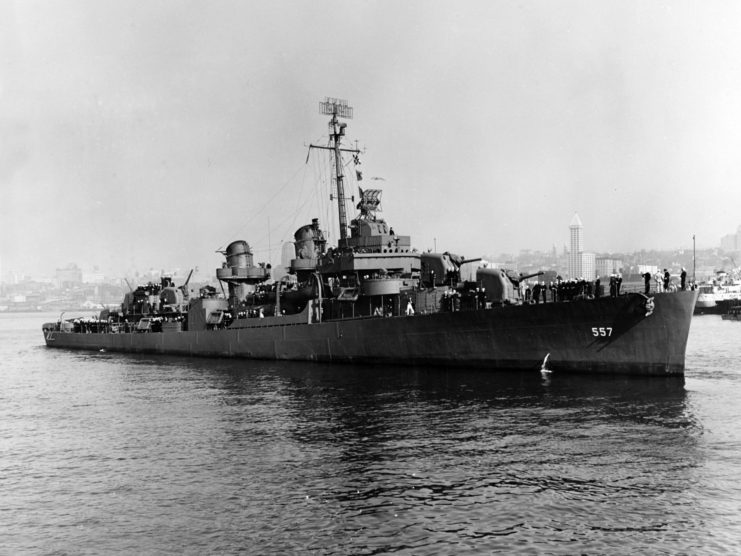
On July 21, 1944, Johnston partnered with the USS Pennsylvania (BB-38) to bombard the island, and by July 30 had fired over 4,000 shells. She then helped protect the escort carriers providing air support for the invasion and capture of Peleliu. Following replenishment at Seeadler Harbor, Johnston sailed to the Leyte Gulf, where she continued her role in protecting escort carriers.
Sinking of the USS Johnston (DD-557) during the Battle Off Samar
On October 23, 1944, American submarines detected units from the Japanese fleet sailing to the area via the South China Sea. The majority of the ships making up the US forces went to engage, leaving the USS Johnston and her small escort carrier task force – Taffy 3 – alone in the north Leyte Gulf, off the San Bernardino Strait.
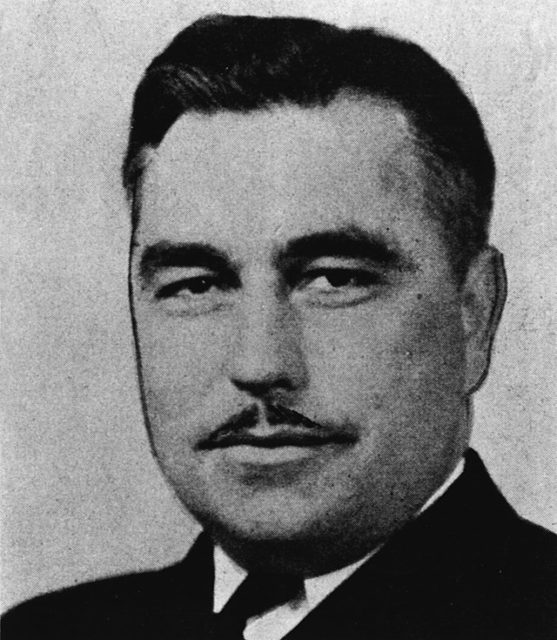
Two days later, the powerful Japanese Center Force, made up of four battleships (including the Yamato), eight cruisers and 11 destroyers, snuck through the San Bernardino Strait and into the Philippine Sea, heading toward the Leyte Gulf. Johnston led the attack, and during the initial encounter knocked out a Japanese cruiser, suffering extensive damage herself. However, her crew regrouped and re-engaged the enemy.
After two-and-a-half hours, Johnston lost power and was surrounded by the Japanese ships. Her captain, Cmdr. Ernest E. Evans, ordered his crew to abandon ship, after which the vessel rolled over and sank. The ships that also sank included the destroyer USS Hoel (DD-533). Of Johnston‘s 327-man crew, 186 died, including Evans, who was posthumously awarded the Medal of Honor. The ship herself won the Presidential Unit Citation.
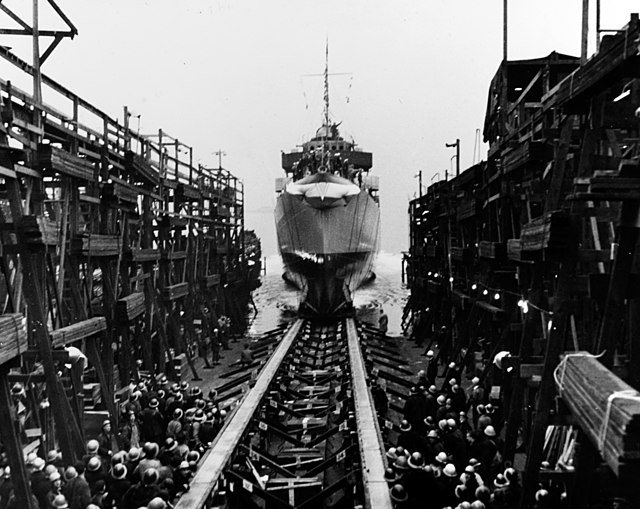
The Battle Off Samar and the others that made up the Battle of Leyte Gulf were a major victory for the Allied forces, as they prevented the Japanese from attacking US troops that were inland as part of Gen. Douglas MacArthur‘s invasion. As well, the ships making up Taffy 3 managed to inflict severe damage upon those of the Center Force.
Initial discovery of the shipwreck
In 2019, Vulcan Inc. announced it had discovered what it believed to be the wreck of the USS Johnston. Using a remote-operated vehicle (ROV), the team spotted the debris 20,400 feet below the Philippine Sea, at the edge of an underwater precipice known as Emden Deep.
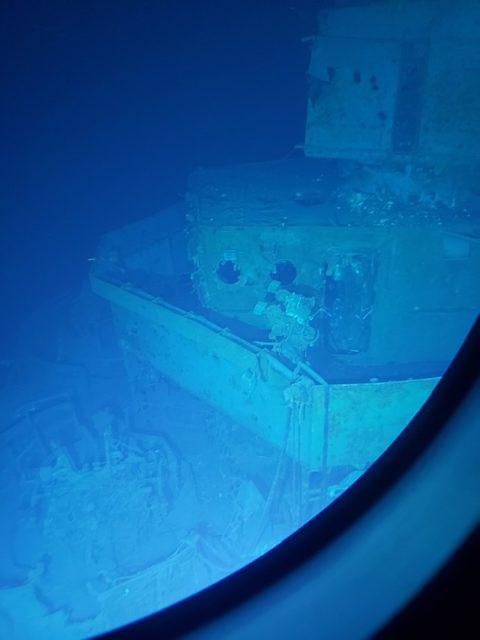
The wreck’s depth meant it was impossible to survey it in its entirety, due to fears of losing connectivity with the ROV. As such, the team was only able to determine that the ship was a Fletcher-class destroyer.
However, as Johnston and the USS Hoel had both sank during the Battle Off Samar, they couldn’t be certain the ship was, in fact, the former. They could only surmise based on its location and color.
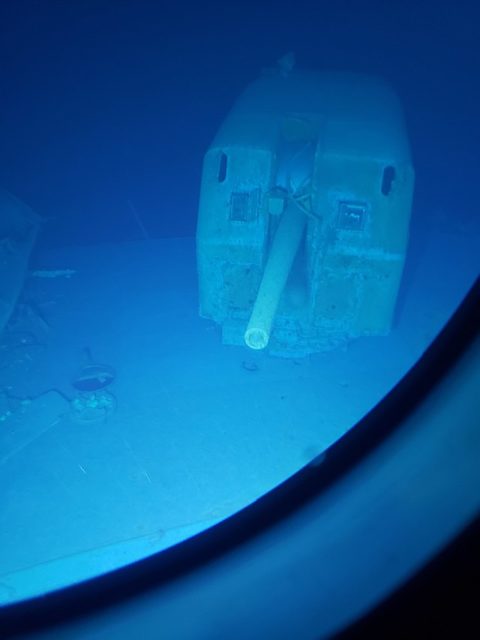
The footage obtained showed the wreck to be well-preserved, but in rough shape with no hull structure. The team noted two five-inch gun mounts, a propellor shaft, two funnels and multiple pieces of mangled metal found on and around the ship.
Confirmation the USS Johnston (DD-557) has been located
In March 2021, Caladan Oceanic announced it had confirmed the wreck discovered by Vulcan Inc. to be the USS Johnston. Using the research vessel DSV Limiting Factor, the company fully surveyed and photographed the wreckage, revealing the hull’s number – 557 – and positively identifying the wreck as belonging to the sunken destroyer.
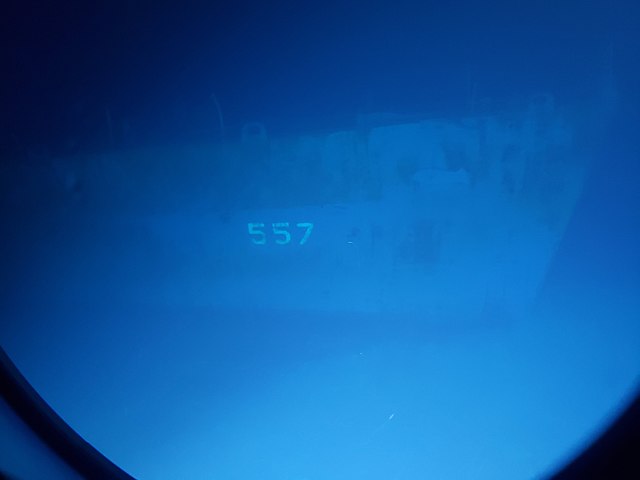
According to the team of researchers, Johnston sits at a depth of 21,180 feet below sea level, more than 100 feet deeper than previously thought. This initially made it the deepest shipwreck ever discovered – that is, until the wreckage of the USS Samuel B. Roberts (DE-413) was uncovered in June 2022.
More from us: Veterans Saved the USS Batfish (SS-310) By Moving It to a Soybean Field
The John C. Butler-class destroyer escort, which sunk after being hit by a torpedo during the Battle Off Samar, was found sitting 22,621 feet below the ocean’s surface, making it the deepest wreckage ever discovered.
